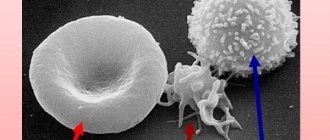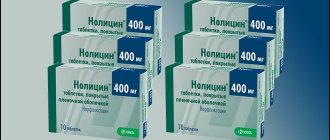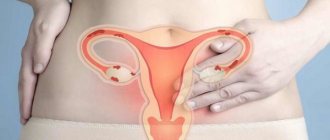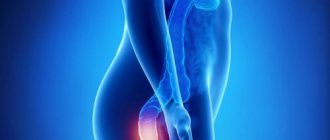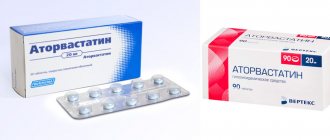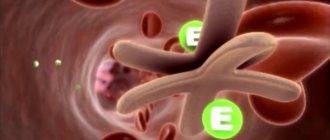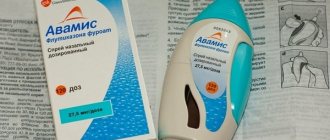Prostate adenoma is a benign hyperplasia (overgrowth) of glandular, fibrous (read about prostate fibrosis) or muscle tissue (true, fibroadenoma and myoadenoma, respectively). At the same time, the increase in the mass of the gland sometimes amounts to more than 200 g. At the initial stage, the growth process can be stopped using conservative therapy methods. The difficulty of early diagnosis is that the symptoms of prostate adenoma depend on the direction of its growth. Often, hyperplasia is detected in the later stages during an examination for a completely different reason.
What is prostate adenoma
Prostate adenoma is a neoplasm of benign paraurethral glands. The disease leads to a number of disorders in the functioning of the urinary and reproductive systems. The urethra suffers most from the pathological proliferation of prostate tissue, as it becomes compressed by the growing nodules.
Although adenoma has a benign course, without proper treatment it can lead to the development of malignant processes in the prostate gland.
BPH compresses the urethra
Course of the disease
The appearance of adenoma in men is preceded by many years of asymptomatic changes in the tissues of the prostate gland. The first signs appear on average 5 years after the onset of the pathological process. There are three stages of the disease:
- In the first stage, the organ enlarges and puts pressure on the urethra and bladder. This is accompanied by mild dysuric disorders - there is a more frequent need to visit the restroom, and at night you feel a constant filling of the bladder.
- In the second stage, the disease takes on a more severe form. The bladder gradually stretches, and the lumen of the urethra narrows. Frequent urge to go to the toilet is aggravated by the need to strain the pelvic muscles to empty the bladder. At the same time, the stream of urine is weak, and the man cannot fully control it.
- At the third stage, due to severe distension of the bladder, a problem such as incontinence arises. Every trip to the restroom becomes a real test: a man strains for a long time to start urinating, strains his muscles very hard to hold back the stream of urine. At the end of the process, urine continues to leave the bladder, which is manifested by slight leakage. Empirical urge to go to the toilet and urinary incontinence are possible.
The third stage of the disease is dangerous due to the development of complications. Due to compression of the urethra, it may become pathologically narrowed (urethral stricture). This leads to urinary retention. This is a dangerous complication that requires medical attention. Against this background, inflammation of the bladder (cystitis), nephritis, and urolithiasis may develop. As a rule, at the third stage of BPH there is a need to constantly wear urological pads or a urine bag.
Why is it dangerous?
The resulting prostate adenoma can pose a danger to human health and life. This is especially true in cases where, for certain reasons, a man refuses to treat hyperplasia. The main danger of the disease lies in its complications, which arise in the last stages of adenoma development.
Very often, with this urological disease, men experience acute urinary retention. This problem is solved using catheterization or surgery.
Prostate adenoma also leads to chronic renal failure, hematuria and the formation of stones in the urinary system. The proliferation of glandular tissue contributes to the development of infectious diseases such as pyelonephritis, prostatitis, urethritis and adenomitis.
Functions of the prostate gland
Prostatitis and adenoma are common diseases of the prostate gland in men. The organ is located just below the bladder. Prostatitis is an inflammation of the prostate that causes potency disorders, causes problems with urination, erection, and reduces sperm activity.
Prostate adenoma is a benign tumor. It causes an increase in the size of the prostate in men, which is why its functions are also impaired. In addition, the overgrown gland begins to put pressure on the bladder. Prostate functions that are impaired in adenoma and prostatitis:
- The production of a specific secretion that is part of the sperm and dilutes it. Due to this, sperm become viable and gain mobility.
- Release of seed. Due to the smooth muscles of the prostate, it enters the urethra, due to which ejaculation occurs.
- Making a secret. It includes fats, enzymes, hormones, proteins, without which the male reproductive system cannot function normally.
Articles on the topic
- Frequent urination in men - treatment with conservative and alternative methods, complications
- Frequent urination in men - physiological and pathological causes, associated manifestations
- Cardura - instructions for use and side effects, mechanism of action, contraindications and analogues
Prevalence of the disease
Benign hyperplasia is one of the most common diseases among the male population. Several decades ago, it was found most often in men over 57 years of age. Today, this diagnosis is given to patients who have not yet reached 54 years of age.
Initial signs of prostate adenoma can appear in young people around 25 years of age. Up to 30 years of age, the disease occurs in 8% of men. 50% of those under 50 suffer from this pathological condition.
According to statistics, hyperplasia is most often found in residents of India, North America, Europe and Egypt. The disease is not as common in men from Japan and China.
Asians are less likely to suffer from prostate adenoma
Arterial hypertension, atherosclerosis
One of the culprits in the appearance of adenoma in men is considered to be elevated cholesterol levels, which leads to partial blockage of the blood vessels that supply all organs, including in the pelvic area. Cholesterol plaques lead to the development of atherosclerosis, when the vessels become narrower and the muscle tissue from which they are composed loses its elastic properties.
A decrease in the lumen of blood vessels leads to an increase in the load on the heart, the pressure in narrow arteries increases and arterial hypertension develops. Blood begins to flow more slowly, and a blood clot forms in the area where cholesterol accumulates, further reducing the lumen of the blood vessels. As a result of slow blood flow, congestion develops in the pelvis; all organs, including the prostate gland, experience hypoxia and a lack of nutrients. To compensate for negative conditions, prostate tissue begins to actively multiply, hyperplastic processes are aimed at increasing the production of gland enzymes to activate testosterone.
The combination of all factors leads to the development of adenoma, and an additional danger is the rupture of a blood clot, which can clog large vessels and enter the heart and brain with the bloodstream, causing a heart attack or stroke.
Causes
The causes of prostate adenoma in young and older men have not been fully understood. Experts in the field of urology suggest that the pathological process is caused by an increase in the activity of the enzyme 5-alpha reductase in the body. It leads to the transformation of testosterone into the hormone dehydrotestosterone, which promotes the growth of gland tissue.
Internal factors that negatively affect the condition of the urinary system and the entire body can increase the likelihood of developing the disease in men. The following are the causes of prostate adenoma:
- Hereditary predisposition;
- National characteristic;
- Disturbances in the functioning of the endocrine system;
- Patient's age.
The appearance of a benign neoplasm from the tissues of a glandular organ is not affected by the richness of a man’s intimate life. Also, this process is not affected by the presence of viral or infectious diseases that affect the genitals.
Older age increases the likelihood of developing adenoma
Excess weight
Being overweight or obese is a provoking factor for all of the above diseases. The development of adenoma is especially affected by abdominal fat deposition, when the problem area is the abdomen. The direct relationship has been proven by scientific research.
The development of adenoma is especially affected by abdominal fat deposition, when the problem area is the abdomen
Adipose tissue produces estrogens. Excess fat disrupts hormonal balance by increasing the production base of female hormones that suppress testosterone. As a result, the activity of dihydrotestosterone increases. At the same time, potency and the ability to conceive are significantly reduced. In addition, excess weight provokes an increase in insulin levels in the blood.
Fat is deposited not only in internal organs, but also in blood vessels. This leads to the development of cardiovascular diseases, impaired blood circulation, hypertension, thrombosis and atherosclerosis. All this has an extremely negative effect on the condition of the prostate gland.
Symptoms at different stages
Prostate adenoma has characteristic symptoms, thanks to which a man understands that something is wrong with his health. With each new stage of development, the signs of the disease intensify, thereby worsening the general well-being of the patient. The first symptoms of benign hyperplasia are the following conditions:
- Difficulty urinating;
- Discharge of droplets of urine some time after visiting the toilet;
- Urinary retention or incontinence;
- Intermittent stream;
- The need to make an effort when urinating;
- Decreased libido and potency;
- The appearance of impurities in the urine.
After the appearance of primary symptoms and the transition of hyperplasia to a new stage, a change occurs in the density and structure of the muscle tissue of the bladder, its walls and neck. Pathological disorders also affect the nerve endings of the affected area. Against this background, the patient experiences other signs of adenoma:
- Increased frequency of the urge to urinate;
- The appearance of burning and pain during emptying of the bladder;
- Producing a minimal amount of urine.
If the adenoma becomes advanced, these symptoms will intensify significantly. The patient will constantly experience severe pain both at night and during the day. He will also begin to be bothered by involuntary urination.
Since the urethra suffers most from adenoma, the symptoms are associated with impaired urination
Causes and symptoms of prostatitis
Prostatitis is an inflammatory disease of the prostate gland. The prostate gland (prostate) is an organ of the male genitourinary system that produces a special secretion, which is an integral part of sperm. In most cases, prostatitis is caused by sexually transmitted infections (STIs): chlamydia, trichomoniasis, gonorrhea and others. There are also non-bacterial forms of prostatitis. They are provoked by hypothermia, a weakened immune system, and irregular sex life.
At the initial stage, prostatitis is manifested by impaired urination. There may be a burning sensation and pain during urination, frequent and painful urges, and the inability to completely empty the bladder. Over time, erectile dysfunction and premature ejaculation may develop.
Watch the video:
Diagnostics
If a man suffers from prostatitis, then after some time he may develop benign hyperplasia. To find out the cause of the disease, he needs to undergo a comprehensive examination at the clinic.
History taking
First of all, the urologist must find out exactly what symptoms are bothering the patient and how intense they are. He will conduct a conversation with the man using a questionnaire developed by WHO. It contains questions regarding the characteristics of urination, the need to strain during the process, as well as the frequency of visiting the toilet.
Inspection
A specialist examines the prostate gland through the rectum. If a man has prostate adenoma, the glandular organ will be enlarged and elastic. When touching it, the patient will not experience severe pain.
Laboratory research
Before diagnosing a man, he must familiarize himself in detail with the results of the tests he has undergone:
- General urine analysis;
- Kidney test;
- PSA blood test;
- Histological examination of prostate tissue.
The first 3 tests can detect hyperplasia. Histological examination is intended to determine its benignity or malignancy.
Laboratory diagnosis includes several tests
Instrumental studies
To diagnose prostate adenoma, the doctor will ask the patient to undergo the following procedures:
- Ultrasound;
- X-ray (x-ray and excretory urography);
- Urethrocystoscopy;
- Uroflowmetry.
Additionally, videourodynamics and urethral profilometry may be required.
Treatment of prostatitis in Germany
Treatment of prostatitis in a German clinic always begins with a thorough examination. After all, a complete diagnosis is the key to choosing the right treatment and speedy recovery. First, the doctor will get acquainted with the patient’s complaints and conduct an examination. Then he will prescribe blood, urine and prostate secretion tests and, if necessary, an analysis for sexually transmitted diseases. Next, an ultrasound examination of the prostate, bladder and kidneys will be performed. According to indications, the patient is prescribed a prostate biopsy.
After studying the results of the studies and taking into account the collected anamnesis, the doctor will choose a method of treating prostatitis. Treatment typically includes antibiotic therapy, immune-boosting medications, anti-inflammatory medications, and painkillers. Prostate massage and physiotherapeutic procedures may be used.
Treatment
After the urologist understands why the man is bothered by prostate adenoma and identifies the stage of its development, he will be able to move on to the stage of selecting an individual treatment regimen. Today, several treatment methods are offered for benign hyperplasia. The choice of treatment course depends on a number of factors:
- Patient's age;
- The degree of disruption of the urinary system;
- General condition of the patient;
- Presence of concomitant pathologies;
- Presence of obvious signs of prostate cancer;
- Stage of hyperplasia.
At the initial stages of the development of prostate adenoma, patients are limited to taking a course of medication. In more advanced stages, surgical intervention is required to remove excess tissue.
Medicines
Medicines cannot completely eliminate prostate adenoma. But they help restrain this process and relieve painful symptoms.
For medications to work, they must be taken over a long period of time. Usually, when benign prostatic hyperplasia appears, it is recommended to drink:
- Alpha adrenergic blockers (“Terazosin”, “Alfuzosin”, “Doxazosin”);
- 5-alpha reductase blockers (“Finasteride”, “Dutasteride”);
- Herbal medicines (“Prostamol”, “Tykveol”).
Drug therapy for benign prostate hyperplasia is supplemented with combination medications.
In parallel, it may be necessary to take anti-inflammatory and antibacterial drugs if the adenoma occurs along with infectious diseases of the genitourinary system.
Surgery
Radical methods of treating prostate adenoma, which are recommended in the absence of the effect of the drug course and the advanced course of the disease, are:
- Open adenomectomy;
- Transurethral resection of the prostate;
- Transurethral electrovaporization;
- Transurethral incision;
- Cystotomy;
- Embolization.
Sometimes surgery is the only chance for a patient to get rid of hyperplasia. However, such a procedure can lead to a number of adverse health effects. Prostate surgery sometimes causes the following complications:
- The appearance of adhesions in the ureter or its abnormal fusion;
- Urinary incontinence;
- Rejection of seminal fluid into the bladder;
- Preservation of a large amount of residual urine volume;
- Impotence.
The urologist must warn the man about all existing complications before the operation.
Transurethral resection is less traumatic than abdominal surgery
Other treatments
Treatment of hyperplasia is successfully carried out using non-surgical methods. The most popular and effective among them are:
- Balloon dilatation of the prostate gland;
- Microwave coagulation;
- Urethral stenting;
- Transurethral needle ablation;
- Cryodestruction;
- Laser removal of overgrown prostate tissue.
These methods occupy a place between drug therapy and surgery. They are used to quickly restore the functionality of those affected by hyperplasia of the organs of the urinary and reproductive systems.
Symptoms depending on the stage and type of adenoma
The development of adenoma occurs in several stages, each of which is characterized by its own group of symptoms:
- Compensated. Apart from increased frequency of urination (mainly at night), no other symptoms initially appear. Later, the stream of urine begins to lose pressure and eventually flows out vertically, without an arc. The stage is called compensated, since the hypertrophied (enlarged due to constant tension) muscles of the bladder walls are still able to completely expel urine. The duration of this period can be up to 10 years.
- Subcompensated. Adenomatous nodes put pressure on the bladder from below, which disrupts blood circulation in its walls. Irreversible changes occur in their structure - stretching, the formation of areas of inelastic connective tissue. The lumen of the urethra becomes narrower, urine comes out with difficulty and not completely, and the residual volume increases. Due to the pressure it creates, the upper ureters gradually expand. As a result, infections penetrate the kidneys, their functional tissue (parenchyma) begins to die under pressure, and toxins accumulate. As a result, symptoms of renal failure are added: weakness, fatigue, swelling, nausea, smell of acetone from the mouth, increased irritability, constant thirst.
Urologist-andrologist Zhivov Alexey Viktorovich about the symptoms of prostate hyperplasia
- Decompensated. The bladder is almost uncontrollable. It is distended, filled with urine, and the muscles do not contract. The desire to empty it is now constantly present, but urine is released so slowly that the abdominal muscles become tired. Random leakage may occur. Symptoms often include severe pain in the lower abdomen. The patient's condition is deteriorating sharply due to kidney dysfunction, and urgent medical attention is needed.
The severity of symptoms depends not so much on the size of the adenoma, but on the direction of its growth. There are three forms of adenoma:
- Subvesical (intratrigonal). Growth is directed towards the rectum. There are no problems with urination, but due to the flattening of the bottom of the bladder, the pressure in it changes, which negatively affects the condition of the upper ureters and kidneys.
- Prevesical (retrotrigonal) is the most hidden form, in terms of symptoms. The lobes of the gland grow in lateral directions, the bladder rises slightly, changing the angle of inclination of the ureters. The qualitative and quantitative characteristics of urination remain almost unchanged.
- Intravesical (intravesical) is the most dangerous form, characterized by a rapid increase in symptoms. The tumor moves towards the bladder, pressing into it and deforming the neck. The main symptom is difficulty, and at times even impossible, urination.
Three stages of development of prostate adenoma (Click on the image to enlarge)
The adenoma may be small, but if it grows inside the bladder, then symptoms will appear quickly, and the deterioration of the condition will actively progress.
Nutrition and excess weight
Eating disorders have a negative impact on the entire body. Eating fatty, sweet, salty foods, and indulging in semi-finished and canned foods disrupt metabolic processes, cause the development of atherosclerosis, and affect hormonal levels.
The causes of BPH caused by poor nutrition are closely related to risk factors for the development of cardiovascular pathology, endocrine disruption and metabolic problems. Red meat, especially beef, contains substances that stimulate tissue growth, including the prostate gland.
An increase in normal body weight leads to increased stress on blood vessels, causes an increase in pressure in the abdominal cavity, and also provokes the active production of estrogen.
Negative food habits lead to the risk of developing hyperplasia, while the combination of negative factors has a complex effect on the male body. Those who abuse alcoholic beverages, especially beer lovers, are in a separate risk group. Substances contained in most types of foamy drink provoke the production of estrogens, which increases the risk of developing adenoma.
Lifestyle
Lack of physical activity and work associated with prolonged stay in one position are among the provoking factors for the development of congestion in the pelvis. Prostate adenoma often develops in those who spend most of their time driving a car or in an office chair.
Blood stagnation leads to hypoxia, with low physical activity the function of the cardiovascular system suffers, and obesity often develops against the background of reduced energy consumption. Long car trips create conditions for the development of adenoma under the influence of a combination of negative risk factors.
Fans of extreme sports are also at risk, since often traveling to ski resorts or diving is associated with hypothermia. Inflammatory processes in the genitourinary system can provoke autoimmune disorders and also cause prostatitis, the development of which is directly related to the formation of adenoma.
Is there a malignant adenoma (cancer)?
Adenoma = cancer? Not really. These are mutually exclusive concepts: the term “adenoma” itself means a formation of a benign type. Cancer is a malignant tumor. Moreover, formations of both types develop slowly and without obvious symptoms. Their manifestations are similar in many ways, so it is important to diagnose a malignant tumor in time.
Prostate cancer is the second most common cancer in men. The chance of getting this diagnosis increases after 50 years of age and becomes maximum in the age range of 65-70 years.
There are four stages that vary in severity. Symptoms become noticeable only at stages 3-4, when cancer cells have already spread beyond one organ and begin to spread to others. As you yourself understand, under no circumstances should it be brought to this state, remember about prevention and timely examination.
In the modern world it is not so easy to lead a correct and healthy lifestyle. An adult is distinguished by the fact that he is aware of his own imperfections and does not try to convince himself that everything is in order. Accept as a fact that your body is not receiving certain nutrients, is breathing dirty air and is regularly exposed to stress. After this, think about what you can do in advance, before the disease takes you by surprise. A timely response is a big part of success, and preventing diseases is always easier than treating them. Right now, watch our men's video courses on improving male strength and health, for example, “LMB Training,” add prostate massage to your sexual routine with your woman, and never get sick!
Preventive measures - prevention of adenoma
Due to the existing risk of tumor growth in the prostate gland, adenoma prevention is recommended to be carried out at the age of less than 30 years. In order to prevent dangerous prostate disease, you must:
- Quit smoking (hookah and electronic cigarettes are also undesirable).
- Reduce the amount of alcohol consumed.
- Get enough sleep (7-8 hours should be allotted for daily uninterrupted sleep).
- Lead an active lifestyle (when working sedentarily, it is important to periodically do warm-ups).
- Have a regular sex life (it is important to have a permanent, reliable partner).
- Avoid contracting sexually transmitted infections.
- Control body weight.
- Maintain a healthy diet.
To avoid a diagnosis of “adenoma”, at any age it is important to prevent hypothermia in the pelvic area, leading to inflammation and creating “favorable” conditions for the appearance of various tumors. If you want to engage in hardening, you must perform all actions correctly, under the guidance of a competent specialist.
Share:
Reviews about the treatment of prostate adenoma in men
In reviews, some men admit that they find it difficult to believe in the effectiveness of drug therapy for prostate adenoma. As many patients write, they tried various drugs, but there was no result from their use. In this regard, many patients have to agree to surgery.
Doctors write that prostate adenoma cannot be ignored, as this is fraught with serious consequences. As men who sought medical help on time write, drug treatment helped them. In particular, very often in comments to materials on how to treat prostate adenoma in men, patients praise a medical drug called “Prostate Forte”.
Genetic predisposition
Gene disorders often cause the development of benign and malignant tumors. All information about the normal structure and functioning of the human body is contained in genes, a certain set of which is inherited through family lines. Changes in the structure lead to an increased risk of developing hereditary pathologies, and the damaged gene can be transmitted through a generation or more. Recent scientific data also indicate that if an adenoma is detected in one of the twins, in 90% of cases the second also suffers from this disease.
The area of hereditary pathologies in medicine is one of the most difficult to study; the material for collecting accurate statistics and establishing genetic causes is not enough to create a complete picture.
Drug therapy
It is quite possible to cure prostate adenoma with medications. But such treatment will be effective only in cases where the disease is not advanced. In order to eliminate adenoma, alpha-reductase inhibitors and alpha-blockers are used. If necessary, antispasmodic medications are prescribed along with anti-inflammatory suppositories (for example, the drug Vitaprost or suppositories with propolis) and immunomodulators. For therapy to be more effective, patients need:
- eat a balanced diet;
- completely abandon any bad habits;
- It is mandatory to regularly visit a urologist for re-examination.
The effectiveness of therapy can be increased if biologically active additives are used. There are a large number of them these days. Drugs for the treatment of symptoms of prostate adenoma in men must be carefully selected for each patient individually.
Stages of development
Prostate adenoma can develop, moving from one stage to another:
- Compensated. At this stage of the disease, there is a weak, sluggish stream of urine when urinating. The process itself is rapid and difficult.
- Subcompensated. Signs include a constant feeling of heaviness in the bladder, and incomplete emptying. There are malfunctions in the functioning of the kidneys.
- Decompensated. Muscle tone completely disappears in the urinary canal. As a result, the process of urination is blocked.
A benign tumor progresses slowly. It has been noticed that men often ignore the primary symptoms of pathology and seek medical advice only when problems with urination occur.
Methods for eliminating prostate tumors
Depending on the indications, treatment of adenoma is carried out in various ways:
- conservative;
- surgical.
Conservative therapy for adenoma includes the use of medications, physiotherapy, adherence to a special diet and exercise therapy. Surgical treatment may look like a classic operation or a minimally invasive intervention.
To strengthen the main treatment course, many experts recommend that patients additionally turn to alternative medicine. Any folk remedies for adenoma or other techniques can be used in the absence of contraindications.
Medicines prescribed for adenoma
The use of medications is most beneficial at the first stage of prostate tumor development. Drug therapy can be abandoned and replaced with surgical treatment methods. Such situations arise if the patient himself wishes, or if the patient has contraindications to taking medications.
Among the commonly used medications are the following medications for adenoma:
- α-blockers (Alfuzosin, Doxazosin). Such remedies help relax the tone of the smooth muscles of the prostate, reduce pressure on the urethra, and facilitate the outflow of urine.
- 5-α-reductase blockers, represented by Finasteride, Dutasteride. These medications prevent the appearance of the active form of testosterone and help reduce the size of the prostate.
- Herbal remedies (Pygeum africanum, Afala). Such drugs for prostate adenoma exhibit anti-inflammatory, anti-edematous effects, prevent testosterone from acquiring an active form, and help stop the growth of the tumor.
Often, specialists resort to prescribing combined drugs against enlarged prostate tumors. One of these products is Soniride Duo, which combines 2 active ingredients - finasteride and tamsulosin.
This remedy for adenoma helps to quickly eliminate the symptoms of BPH and helps fight the causes of the disease. It is important to take into account that the drug is equipped with a considerable list of contraindications and side effects, and therefore many doctors use it extremely carefully.
In parallel with drug therapy for the tumor, the patient receives recommendations regarding proper lifestyle and nutrition. Often, a medicinal course for adenoma is combined with therapeutic exercises.
Physiotherapy for a tumor in the prostate
Physiotherapeutic procedures combined with drug treatment of the tumor often provide long-term positive results or lead to complete recovery. The most gentle and effective for prostate adenoma are:
- laser coagulation;
- microwave thermotherapy;
- peloidotherapy (applications with peat and silt mud).
If there is a tumor in the prostate gland, UHF, inductothermy, microwave and ultrasound therapy, which can activate the growth of the tumor, are not used. It is also undesirable to perform direct massage of the prostate (this procedure is performed only to obtain prostatic secretions for laboratory diagnostics).
Diet and exercise therapy
It is recommended to enrich the diet of a patient with prostate adenoma with foods that improve intestinal function:
- Fresh vegetables (beets, tomatoes, pumpkin).
- Fruits (apples, apricots, grapefruit).
- Bran, cereals.
- Porridge (buckwheat, oatmeal, barley).
- Fermented milk products (no more than 300 g per day).
It is worth providing the patient with foods containing zinc (salmon, celery, parsnips), low-fat meats and fish. You will need to consume no more than 1.5 liters of liquid per day (vegetable, fruit juices, green tea, mineral waters). For prostate tumors, weak black tea and coffee are allowed.
Under adenoma, alcohol, canned food, smoked foods, spicy foods, and any types of spices and seasonings are prohibited.
Exercise therapy is considered by urologists as an important component of complete treatment of the prostate gland. Correctly performed exercises for adenoma help to significantly slow down the growth of the tumor, or completely stop its progression. At the initial stage, training must be carried out under the supervision of a specialist.
There are special complexes for prostate tumors, which must be performed in the morning, before breakfast. Your feet should be kept warm while charging. Otherwise, the effectiveness of training is greatly reduced.
Running in the morning and doing push-ups will contribute to a speedy recovery from prostate adenoma. If you have BPH, prolonged cycling or driving in a car is not recommended.
Surgical treatment of prostate tumor
Radical methods of surgical treatment performed using general anesthesia include:
- transurethral resection (TURP, surgery performed through the urethra);
- open adenomectomy (performed with dissection of the abdominal wall and bladder).
Both methods of treating adenoma are aimed at removing the prostate gland. Their use becomes justified when the diseased organ is of significant size, tumor malignancy, low effectiveness of drug therapy, parallel development of cystitis, and stone formation in the gland.
If surgery for a prostate tumor is unavoidable, minimally invasive techniques can be used:
- laser vaporization;
- radio wave needle ablation;
- embolization
After such manipulations, the patient’s risk of developing complications is reduced. During the operation, there is no need to make traumatic incisions on the patient’s body.
The most modern method of treating adenoma is embolization (blockage of the prostatic artery using special compounds). This surgical technique causes a reduction in the blood supply to the organ, followed by a reduction in the size of the tumor and the volume of the prostate gland.
After embolization, the patient retains full libido and potency, and there is no likelihood of developing an infection. An important advantage of this method of prostate treatment is that there is no need for further use of potent medications.
Recovery after intervention for prostate adenoma occurs as quickly as possible. Most operated men are allowed to leave the hospital on the 2nd day after the embolization procedure.
Surgery
Surgical therapy for prostate adenoma is necessary in cases where the second or third degree of severity of the disease is diagnosed. Nowadays, there are many techniques for removing the affected area. Open prostatectomy is often used. This procedure can be used in cases where the mass of the gland is more than 60 grams, and the volume of residual urine exceeds 150 milliliters. Open prostatectomy is sometimes replaced by other procedures. In order to get rid of an adenoma, the following types of surgical intervention can be used:
- performing embolization of prostate arteries;
- carrying out transurethral laser vaporization;
- performing transurethral microwave therapy;
- stenting and cryodestruction.
Immediately after surgery, the patient will need to undergo a course of rehabilitation to avoid relapse. Treating the symptoms of prostate adenoma in men with medications can also be very effective.
What is the cost of the operation?
The price tag varies greatly: the cost can vary tenfold, it all depends on the region and type of operation. Yes, everything is not so simple here - even a tumor can be cut out in different ways.
The most popular type of operation is called transurethral, or TUR for short, in which a wire loop and a cystoscope are inserted into the urethra. An electric current passes through the loop, which simultaneously cuts off unnecessary tissue and seals the vessels so that they do not bleed. Surgery for prostate adenoma is performed with spinal or epidural anesthesia.
You can choose laser or laparoscopic surgery - through a hole with a diameter of no more than a centimeter. And if the tumor has reached a large size - more than 80 g, it is removed openly through a full incision.
Removal by laser, wire loop or through a large incision costs approximately the same - the price fluctuates around 50 thousand rubles. Laparoscopic surgery causes the least trauma to the body and therefore costs the most - about 150 thousand.
Removal of prostate adenoma is included in the insurance program, so theoretically it can be done free of charge, under compulsory medical insurance. In fact, it all depends on luck: sometimes a referral can be given immediately and without problems, and sometimes they will drag you through all the circles of bureaucratic hell, at each of which they will desperately prove that the situation is not so terrible, and there is no need to remove anything here.
In any case, it is better to prevent than to treat, the technique is described above. The prices for surgery once again prove that prevention in the form of exercise, a relatively healthy lifestyle and prostate massage is nothing compared to the potential consequences.
Instrumental techniques
During the treatment of BPH, doctors prescribe minimally invasive technologies that involve the influence of physical factors on the growing tumor. Treatment with medications in combination with local physiotherapy allows you to treat prostate adenoma without surgery.
Methods of instrumental influence on the prostate gland:
- microwave treatment (access through the urethra or anus);
- radiofrequency therapy (transurethral access).
Several procedures are performed, after which a gradual decrease in size of the gland is observed. In addition to instrumental techniques, hirudotherapy is widely used. Leeches produce a number of substances that have a beneficial effect on microcirculation in the organs in the area where they are used. Against the background of improved blood circulation and blood thinning, it is possible to enhance the trophism of prostate tissue and reduce the size of the tumor without surgery in the early stages.
Disease statistics
The World Health Organization reports that every 3rd man on the planet who has reached the age of 40 is likely to develop an adenoma. In recent years, the disease has shown a tendency to “rejuvenate”, developing after 25-30 years.
Urologists often use the term BPH to refer to prostate tumors, meaning “benign prostatic hyperplasia.”
There are the following statistics that clearly demonstrate the likelihood of prostate tumor growth:
| Patient age | Prostate tumor detection rate |
| Less than 30 years old | 8 % |
| In 40-50 year olds | 12-15 % |
| Upon reaching 60 years of age | 50-55 % |
| 82 year old patients | 80-85 % |
The incidence of prostate adenoma formation largely depends on the race and specific diet of residents of different countries. Most often, the disease is detected in patients belonging to the Negroid race, much less often in Asians.
Diet for adenoma
The diet is selected for each patient individually, taking into account the degree of neglect of the pathology, the general condition of the patient and his medical history, as well as the patient’s taste preferences. But, as practice shows, you can’t do without changing your diet and balancing your diet.
Particular attention is paid to products rich in selenium (Se) and zinc (Zn), which have a beneficial effect on the tumor, reducing its size. During illness, a man should receive 25 mg of zinc and at least 5 mcg of selenium throughout the day.
| Products useful for prostate adenoma | |
| Zinc | Selenium |
|
|
Approximate menu:
- Meat: lean young lamb, rabbit, beef, turkey, chicken.
- Fish: all lean types.
- Soups: milk soup, beet soup, vegetable and vegetable soup, vegetarian cabbage soup, fruit soup, borscht.
- Vegetables: except sorrel, radishes, spinach, garlic, mushrooms, onions and pickled ones. If the cabbage is sauerkraut, it is not sour.
- Bread: preferably wheat, not fresh, but yesterday’s baked bread.
- Dairy: yogurt, milk, kefir, cottage cheese and cheese (low-fat), a little sour cream.
- Cereals: different.
- You can also prepare a protein omelet; milk sausages and various fruits, fresh and dried, are allowed. Drinks such as compote, infusion, juice, jelly. Sweets include mousses and jellies, and candies not made from chocolate. Exclude cream, ice cream and chocolate.
The diet after removal of prostate adenoma will be similar. That is, it is also important to eat more fresh foods, no unhealthy foods. Proteins and vegetable fats take advantage.

